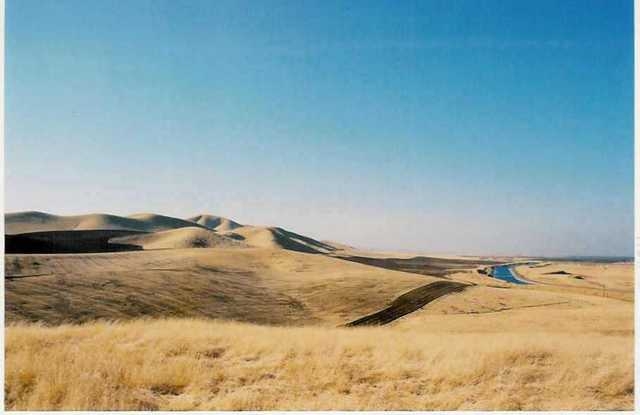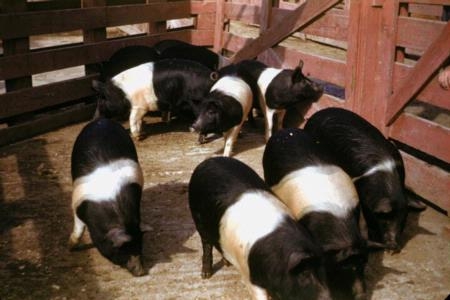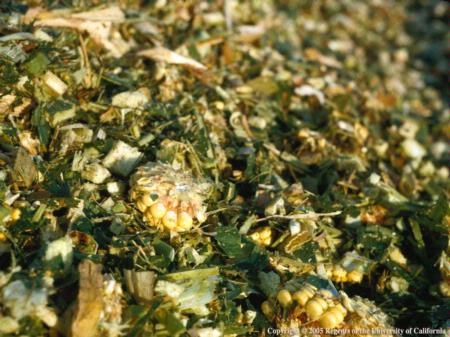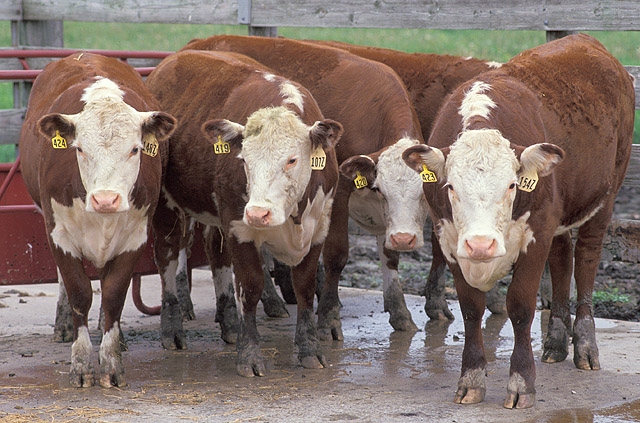Posts Tagged: livestock
Docs ask: Does “do no harm” apply to food served in hospitals?
“First, do no harm” is a core tenet taught to aspiring medical professionals. In June this year, the Sustainability Task Force of the UCSF Academic Senate drafted a resolution asking UCSF food services to phase out of all procurement of meat produced with the use of non-therapeutic antibiotics. Given that many scientists believe that the use of prophylactic antibiotics for livestock production causes antibiotic resistance, how can physicians stand by while hospitals serve foods from antibiotic-treated animals to patients that increasingly suffer from antibiotic-resistant infections? If not, what can they do about it?
In a few weeks, local organizations will take up the hard questions again with their peers at UCSF Medical Center. Going beyond meatless Mondays, healthcare professionals, Healthcare Without Harm, and PEW Charitable Trusts, all see antibiotic-free meat and poultry as the next step in advocating for healthier food.
Fixing this problem for most of us is as simple as buying organic meat or free-range antibiotic-free alternatives. For a UC medical center, however, it is far from simple. Price, supply and food budgets are all based on past purchase history. It takes considerable will, consensus, and commitment to “do no harm” before administrators will agree to pay double or triple the cost for meat produced without these drugs. Cattle fed regular antibiotics to fatten them up, even when they are healthy, are more profitable up the entire food chain.
The advocates for the healthcare side want to know: Can this become a priority for us and our hospitals? Where are the suppliers of antibiotic-free products? Are they selling the cuts we need? How can change be “phased in” to allow the distribution chain to supply this emerging demand? In a hospital, should food be one of the least expensive of many pricey services?
The producers are likely to have questions, too. Is this a lucrative opportunity for smaller alternative suppliers, or is it a political battle to force big agriculture to comply? If producers start down this road, how many bumps will they encounter along the way? Why should they risk supplying a new market when business is risky as is? How long will they commit to these products?
It seems logical that low production costs alone should not threaten the public health of a nation or even just the health of the nation's vulnerable citizens. If these drugs were never allowed for feeding in the first place, producers would be on a level playing field and beef might be more than a commodity. Likewise, ethical food standards have defined humanity for thousands of years. So now that there is more food, more technology and more choice, why is it more difficult to make changes that ultimately benefit everyone?
More information:
The Sustainability Committee of the UC San Francisco Division of UC Academic Senate June 2013 resolution includes a link to a bibliography.
Health Care Without Harm is an international coalition of 500 organizations in 53 countries working to transform the health care sector, without compromising patient safety or care, so that it is ecologically sustainable and no longer a source of harm to public health and the environment.
San Francisco Bay Area Physicians for Social Responsibility, Healthy Food in Health Care Program. 510-559-8777
Photo by Keith Weller, USDA, ARS, Photo Library
California's dry winter is leaving west side cattle hungry
The long rainless winter resulted in grass growth on the west side of the San Joaquin Valley about 80 percent less than usual, reported John Holland in the Modesto Bee. Spring rain pushed somewhat more growth on the valley's east side, which was charted at 55 to 70 percent less than normal.
Theresa Becchetti, UC Cooperative Extension advisor in Stanislaus and San Joaquin counties, a livestock expert, and Diana Waller, district conservationist for the U.S. Natural Resources Conservation Service, reported the conditions in a letter last month to county and federal agriculture officials.
Fall 2011 rain helped germinate seeds, but "unfortunately, that is where it ended," they wrote.
A cattle producer quoted in the story said the poor feed conditions are offset somewhat by beef prices that have remained strong.

The USDA reported that nonirrigated range condition was poor to fair, with some higher-elevation range in good to fair condition.
Not a lot of greenhouse gas is from animal ag
There's been some confusion in recent years about the impact of animal agriculture on global warming. UC Davis Cooperative Extension air quality specialist Frank Mitloehner will share his findings on the subject this month during a free webinar on the eXtension website, according to an article in Pork magazine.
The 2006 United Nations report "Livestock's Long Shadow" said the livestock sector is responsible for 18 percent of greenhouse gas emissions, a higher share than transportation. Mitloehner said livestock's contribution is more like 3 percent, yet wide distribution of the misinformation has put Americans and others on the wrong path toward solutions.
The webinar, which will include information from Mithoehner's report "Clearing the Air: Livestock's Contribution to Climate Change," is at 11:30 a.m. Pacific Time June 11. Forum participants will have the opportunity to ask questions, post comments, upload photos and share their experiences. All the details, including links to background information and to the webinar, are in this eXtension flyer.

Black and white swine.
Animal feed generates lots of valley ozone
Scientists have been puzzled by the fact that the San Joaquin Valley often suffers high ozone levels even though the mostly rural, agricultural domain has fewer cars and trucks than big cities. Research by UC Davis scientists is now showing that some of the ozone in the valley is being generated by fermented animal feed, according to a story posted yesterday on the website Science News.
While ozone provides a protective barrier for the earth in the stratosphere, it is an unwelcome molecule to have around where people are breathing. Ozone (O3) is a powerful oxidizing agent, far stronger than O2. It can harm lung function and irritate the respiratory system.
The UC Davis team, led by environmental engineer Cody Howard, tested seven types of animal feed in a one-meter-square tented chamber, according to writer Janet Raloff, author of the Science News story. They added a mix of gases that matched the valley’s air and simulated sunlight with lamps. The result was lots of ozone.
Corn silage generated about 125 parts per billion ozone, alfalfa silage a little less, and mixed oat-wheat silage 210 ppb, Raloff reported. These emissions pale in comparison to cars. However, because the San Joaquin Valley has so much silage to feed its animal agriculture industry, the feed appears to be the single biggest contributor to the region’s ozone problem, the story said.
Cars and light-duty trucks in the valley can generate 13 metric tons of ozone per day, while feed for the valley’s 10 million head of dairy cattle can produce 24.5 million tons of ozone per day.

Corn silage livestock feed.
When will Mother Nature get it right?
Farmers reeling from three years of drought and an unseasonably warm January are now worried about rainfall at the wrong time of year, according to a story in today's Redding Record Searchlight.
Almond trees that bloomed early because of warm January weather suffered some frost damage. Now, rain during spring bloom is inhibiting pollination. (Who can blame bees for curling up with a good book on rainy days?) Wet weather also raises concerns about fungal diseases. But despite these abnormal weather patterns, UC Cooperative Extension farm advisor Bill Krueger assured writer Debra Moore that almond farmers will still have nuts to harvest next fall.
"If there is good weather between storms, it will give the bees a chance to pollinate," Krueger was quoted. "The diseases won't be as bad as they would have been had these been warm storms."
The article also covered problems experienced by cattle ranchers when precipitation doesn't arrive on schedule.
UCCE livestock program representative Josh Davy told the reporter that February rain storms are filling up stock water ponds, but won't help farmers concerned about this season's rangeland vegetation, on which they rely for animal rations.
"The annual grasses are germinated with fall rains," Davy was quoted. "And this rain has come too late."


